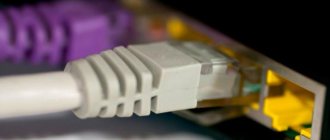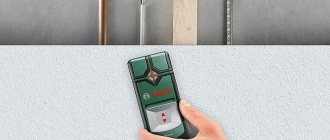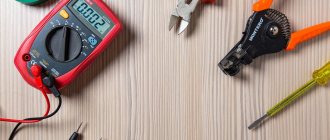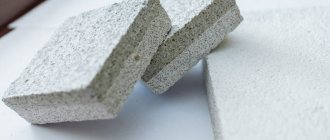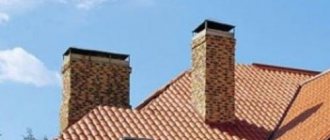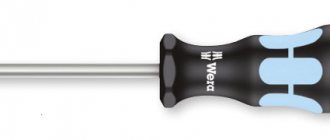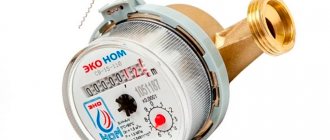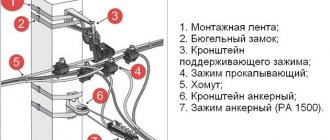Carrying out large-scale repairs in a house or apartment, and even more so - the arrangement of a new, newly built home almost always includes the installation of a home electrical network. This question can be classified as a problem of paramount importance. Not only the ease of use of electrical appliances and lighting, but also, directly, the level of safety of living depends on the thoughtfulness of the design and the quality of the wiring.
Which cable to use for wiring in an apartment
If this large-scale event is planned, then the homeowner will definitely have a question - what cable to use for wiring in an apartment or house? It would seem, what is the difficulty? – the range of specialized cable stores is amazing in its diversity. But the wealth of choice often only confuses the inexperienced consumer. In addition, not all of the samples on sale are suitable for the intended purpose. Therefore, the main objective of this publication is to give the reader a clear answer as to what type of cable should be chosen and why.
Is it necessary to completely change the wiring?
The main reasons for a complete change in apartment wiring
If we are talking about laying electrical wiring in a newly built house, or in an apartment that was purchased in a “bare”, completely unfinished form, only with an input cable installed and an installed meter, then such a question is not even raised - everything has to be done “from scratch”.
But when carrying out major renovations in their properties, many owners are faced with the temptation - maybe they should leave it as it is? Moreover, if the functioning of the home electrical network has not yet been accompanied by any emergency situations, has not caused any complaints and has not given rise to any reason to take emergency measures?
The owners’ doubts are quite understandable: replacing wiring is a very large-scale and labor-intensive process. And it will be associated not only with electrical installation work, which in itself is not easy. There will be quite “dirty” and tedious operations for cutting channels (cuts) for laying cables, sockets for sockets, switches, and junction boxes. All this, of course, will then require high-quality finishing. In a word, it’s scary to take on!
The laying of new home wiring cables is always associated with large-scale general construction work, and then finishing work. Many are stopped by this prospect, but there is no other way...
So, what should motivate owners to make such a decision:
- If the question of general major housing repairs arises, then, presumably, the previous one was carried out quite a long time ago, sometimes even several decades ago. And it will be carried out again with a long-term perspective, which amounts to the same tens.
Wiring cannot be classified as a “perishable” material, however, it also has its own service life. Over time, the wire insulation loses its elasticity and begins to crack or even begin to crumble. And this can cause a short circuit, which is very close to a fire hazard. And metal does not last forever - it gradually “ages”, oxidizes, and becomes more fragile, which is a prerequisite for sudden breaks in the network in the most unexpected places.
Would you dare cover such old wiring with a new finish, in the hope that it will serve for another ten or two years? Or is it better not to take risks so as not to lose more?
In a word, in order to be guaranteed to protect yourself from troubles for many years to come, the wiring should be changed to a new one.
- The second aspect of the problem is the following. The saturation of modern life with electrical appliances, even for an average-income family, cannot be compared with what it was like just one and a half to two decades ago. And new technology requires connection points, and they must meet both the requirements of ease of use and safety rules. Cascades of tees and extensions are a direct path to line overload and a fire hazard. And cords getting tangled under your feet do not add to the comfort of living in an apartment.
With the advent of new household priors, there is a shortage of sockets.
But what is shown in the photograph is not a way out of the situation at all - it is both inconvenient and extremely dangerous! In addition, the old wiring was laid long ago without taking into account the increased power consumption. The purchase of new household appliances often requires the installation of dedicated power lines, since old wires simply may not be able to cope with the load.
Therefore, since a large-scale reconstruction of housing is ahead, it makes sense to redesign the electrical network, thinking through the optimal location of all its elements. And not only in such a way that it meets the current availability and power of electrical household appliances, but also with some reserve for the future.
There is one more reason that may be decisive for the decision to reconstruct the home electrical network. It deserves special mention.
Aluminum is out of the question!
In the era of mass housing construction, when five-story “Khrushchev” buildings, and then houses of later series, grew like mushrooms in cities, the installation of aluminum wiring was widespread practice. At one time, this was justified - it was much cheaper, and large loads were not expected. But if now the owner of an apartment or house sees that his wiring is made of aluminum wires, he should not have any doubts - only a complete replacement with copper!
First of all, this is a direct, non-negotiable requirement of current legislation in the field of construction and safety. If before 2001 the documents made a reservation about the permissibility of aluminum wiring, and then only for the already existing construction groundwork, now the requirement is categorical:
Article 15.3 is relevant to the edition of SP 31-110-2003 “Electrical installations of residential and public buildings. Rules for design and installation."
Internal electrical networks must be flame retardant and made with cables and wires with copper conductors in accordance with the requirements of 2.1 and 7.1 PUE, GOST 31565-2012, GOST R 50571.5.52-2011, SNiP 3.05.06-85, as well as electrical requirements and fire safety.
These requirements are not taken out of nowhere - they are determined by an analysis of experience in the use of both types of wiring and are based on the comparative characteristics of aluminum and copper as current conductors.
A comparison shows that in almost all respects (except, perhaps, cost), aluminum wiring is inferior to copper wiring.
Let's compare on several points:
A. Although aluminum is considered a good conductor with low resistance, it cannot compare with copper. This is most clearly seen if we use a conventional value accepted in electrical engineering, called electric current density. It shows how much current can pass through a unit cross-sectional area of a conductor (1 mm²) without causing dangerous heating, which can lead to melting of the insulation and a short circuit.
If we consider copper, then this figure reaches 10 amperes with open wiring, and 6 amperes with hidden wiring. For aluminum, these figures are much lower - 4 and 6 amperes, respectively. That is, under equal conditions, the cross-section of the aluminum wire should be at least one and a half times larger.
The above values should not be used as a basis for network design - they are provided as an example only. And for real operating conditions, of course, a certain reserve must also be included.
B. Both aluminum and copper are quite active elements from a chemical point of view. They easily react with oxygen contained in the air and quickly (aluminum - almost instantly) become covered with a layer of oxides. But aluminum oxide has much lower conductivity than copper oxides. That is, the resistance on aluminum contacts will always be greater than on copper ones. That is, such connections are more susceptible to heating under high load.
IN . Both metals have good ductility, which is important when installing wiring. But internal fatigue of the aluminum crystal lattice occurs much faster. In other words, such a wire breaks much more easily under mechanical stress. A simple experiment: try bending and unbending a copper and aluminum conductor several times in one place. The result is completely obvious.
By the way, this fragility of aluminum only increases over time - this is a feature of the reaction of its crystal lattice to gradual oxygen corrosion in combination with heating. And in the end, getting an unexpected break in the wiring when using aluminum is much higher than with copper.
D. Another negative feature of aluminum is the lack of stability of its forms. Under the influence of constant mechanical load, it simply begins, as electricians often say, to “float.” For example, over time, even a well-tightened screw terminal with an aluminum wire begins to heat up - the contact clearly weakens and requires regular tightening. The same applies to strands - sparking appears between the conductors, which leads to their strong heating. Even worse, if there is a small gap between the wires, these are already conditions for the occurrence of an electric arc with its temperatures of several thousand degrees, leading to melting of the metal and ignition of the insulation.
Melting of insulation, breaks on aluminum wires in places of twists or terminal connections - a very common phenomenon
You can immediately notice that twisted connections of aluminum and copper wires are completely unacceptable. Differences in chemical structure, electrical conductivity, and linear expansion when heated make such compounds extremely unreliable, short-lived and extremely dangerous. If circumstances force such a contact to be made (although this should be avoided in every possible way), then terminals of one type or another should be used, ensuring the transmission of current through a steel “intermediary” - a screw, busbar, spring, etc.
For such “antics” it would be necessary to deprive the “master” of the right to engage in electrical work for life
And to avoid the temptation to make such a connection, you should simply exclude aluminum from your home wiring.
So, we hope we have convinced the reader of the need to replace the old wiring and do it with copper. If anyone, for reasons of economy or simply not understanding the importance of the issue, nevertheless decides to use aluminum wires, then he may not read this publication further. All further presentation will be devoted exclusively to copper - as required by both the current rules and elementary prudence.
Useful tips
Tips for purchasing electrical cables:
- Carefully inspect the appearance of the cable. Even small bends, dents, or scratches can cause wiring to malfunction.
- The lack of packaging and its poor appearance may indicate poor quality storage of the cable. It is better to refuse such a purchase.
- In order to save money, the lighting can be made with aluminum wires, and a cable with copper conductors can be connected to the sockets.
- To reduce the reserve cross-sectional area to 30%, it is recommended to leave terminals in the apartment panel for connecting additional lines if necessary (for example, purchasing energy-intensive equipment).
The costs of properly installing the electrical network are fully compensated by the durability and reliability of the wiring.
What to use - wire or cable?
“What’s the difference,” many will ask, because these are practically synonyms?
Not certainly in that way. There is a difference, and a very significant one.
- A wire is usually understood as a single-core or stranded conductor, which can have insulation or be produced without it at all (for example, for use in power lines). Most often, the wire sheath does not have additional protective functions, but is designed exclusively for insulating purposes. Resistance to external influences or aggressive environments is not the highest or is completely absent.
Even combining several insulated conductors under a common additional external insulation does not make the wire a cable at all.
- A cable is a collection of several high-quality insulated wires united by an outer sheath, which is assigned not so much insulating but protective functions. There can be several such braids; they can be multi-layered - polymer, metal, fiberglass. Additional filling of the space between the wires under the outer sheath is also practiced.
The presence of a protective sheath allows you to lay cables for the most difficult operating conditions. Well, in the context of this publication, the following can be noted. To lay hidden wiring, where it will be embedded in the walls, that is, it will experience mechanical, chemical, and thermal loads (due to the lack of a normal heat sink), only cables should be used. Wires are acceptable for switching in distribution boards or on groups of sockets, for connecting household appliances and lighting equipment, including in the form of power cords with plugs for plugging into sockets.
It should be noted that the difference described above is very difficult to understand. In particular, products are produced that are practically no different in appearance at first glance. But the manufacturer positions one as a cable, while the other is still called a wire.
On the left is a VVGng 3×2.5 cable, on the right is a PUMP wire with the same number of cores and their cross-section. The cable is suitable for laying hidden wiring, but the wire is completely unsuitable for this.
A classic example of such a pair is the VVG cable and the PUMP wire. Despite all the external similarities, for example, an equal number of conductors and their cross-section, the first one can be used for hidden wiring, but the second one definitely cannot, which has been proven more than once by sad practice. But some electricians still continue to “dabble” in this - this is understandable, since wire is always cheaper than cable. But both the internal insulation of the conductors and the outer sheath completely fall short of the levels of protection and fire safety required for the cable.
So, when purchasing materials, it is always worth clarifying how this type of product passes the existing official certification, whether it is a cable or a wire.
Subscriber branch: concept, principle of operation
On each street there are main power lines, the voltage through which comes from the nearest transformer substation. A higher potential difference of 6 or 10 kV arrives at the transformer. But this information is solely for general development, since the main line voltage is 380 V, and between the phase and the neutral wire - 220 V.
To lay a cable from a pole to a separate consumer - a private house, it is necessary to install a subscriber branch from the main line. A subscriber branch is the supply of electricity to an individual consumer. With this procedure, you must correctly calculate the wire through which the electricity will be supplied.
What characteristics of cables and wires do you pay attention to when choosing
There are several important criteria that must be assessed when choosing cable products. This may include the following:
- cable (wire) structure;
- conductor cross section;
- parameters of insulation of conductors and outer shell;
- product labeling;
- color marking of wires;
- quality;
- Availability of certificates and packaging labels.
Conductor structure
In both cables and wires, conductors can be a single strand of a given diameter, or consist of many thin twisted strands.
Single-core (single-wire) products are always more rigid, and the larger the cross-section, the more difficult they are to install. However, in terms of conductivity, such products are much superior. They have no internal resistance between the veins, which somehow have an outer oxidized layer. That is, under high loads, where a single-core wire copes without problems, a multi-wire one may well begin to heat up.
Stranded and single-wire wires of equal cross-section. The first one is more convenient to install due to its flexibility, the second one is more reliable and safer to use. For hidden wiring, the choice is made in favor of reliability and durability.
But multi-core ones benefit from flexibility - they are convenient for laying openly located wiring, for example, to lighting fixtures or other household appliances. But embedding them into walls is a dangerous business.
Summary: for hidden wiring in an apartment or house, you should still use multi-core copper cables (this refers to the single-core structure of one conductor, and not the number of wires in the cable).
To connect stranded conductors in terminals, special crimp cable lugs must be used
And if stranded products are used for wiring or other electrical installation work, then special crimp lugs must be used when connecting them to the terminals. Otherwise, the conductor will simply be crushed in the terminal, and over time reliable contact will be lost.
Conductor cross-section
This parameter is measured in square millimeters. People often make the mistake of confusing it with the diameter of the conductor, and the difference here is quite significant - it’s worth remembering the formula for the area of a circle, familiar from school.
Do not confuse the diameter of a conductor with its cross-sectional area!
Products from well-known manufacturers are distinguished by well-calibrated wires. But if you purchase a cable of unknown origin (which, of course, should be avoided whenever possible), then it would be useful to check whether the declared cross-section corresponds to reality. To do this, you can measure the diameter of the conductor using a caliper or micrometer, and then simply convert it into a cross-sectional area. The formula used for this is:
Spr = π × D² / 4
or, to simplify it somewhat:
Spr = 0.785 × D²
In theory, the cross-sectional value indicated in the marking should coincide with that obtained in the calculation (of course, with a certain rounding). But if a clear discrepancy is detected, say, even 0.3÷0.5 mm², then this is a reason to think about whether it is worth buying such a cable.
What conductor cross-section and where will it be required? Current density has already been mentioned above - the larger the cross-sectional area of the conductor, the more powerful the power line is. That is, different wires can and should be used for different sections of the home electrical network.
You can use the following table, which shows current limit values for copper conductors of various cross-sections. The parameters are calculated for hidden wiring. Therefore, the table shows several options - for single-core, two-core and three-core cables. Why? - yes, because at high loads they are able to transfer heat to each other, which somewhat reduces the permissible current parameters.
Table of permissible current values depending on the cross-section of the copper conductor
| Core cross-sectional area, mm² | Solid wires | Two-core wires | Three-core wires | |||
| I | II | III | IV | |||
| 0.5 | 11 | — | — | — | — | — |
| 0.75 | 15 | — | — | — | — | — |
| 1,0 | 17 | 16 | 15 | 14 | 15 | 14 |
| 1.5 | 23 | 19 | 17 | 16 | 18 | 15 |
| 2.5 | 30 | 27 | 25 | 25 | 25 | 21 |
| 4.0 | 41 | 38 | 35 | 30 | 32 | 27 |
| 6.0 | 50 | 46 | 42 | 40 | 40 | 34 |
| 10.0 | 80 | 70 | 60 | 50 | 55 | 50 |
As you can see, single-core wires also have their own gradation. The fact is that they are sometimes used to create multi-core wiring, stacked in a bunch of several pieces. And the limiting current value depends on the number of conductors in this bundle:
I - single wire
II - two wires laid side by side.
III - three wires laid side by side.
IV - four wires laid side by side.
Let's make a reservation right away. The table shows the current limit values. But in practice, of course, a certain operational reserve must be built in so that the wires do not heat up to temperatures dangerous for the integrity of the insulation.
Electrical professionals give their recommendations on wiring sections for various sections of the home network. It should be based on the planned load on a particular allocated area.
For a single-phase alternating voltage network of 220 volts, the usual formula for calculating power is valid.
P = I × U
Where:
P —load power, W;
I —current strength, A;
U - voltage, V (in our case - 220 V)
So, which wires will fit where:
- Conductors with a cross-section of 0.5 to 1.0 mm² should not be considered for internal wiring at all.
- Copper wire with a cross section of 1.5 mm². The rated current for it is 10 amperes. A simple calculation shows that this corresponds to a permissible load of 2200 W or 2.2 kW.
Naturally, the line should not be loaded at full power, so such wiring is usually used for lighting systems. One such line, as a rule, is enough to fully illuminate several rooms, and if modern LED lamps are used, it will be enough for the entire apartment.
In the electrical panel, such lines are connected to a circuit breaker rated at 10 amperes.
- Copper wire with a cross section of 2.5 mm². The rated current is 16 amperes, respectively, the permissible load is 3.5 kW.
This wiring is used to connect sockets. They can be single, for specific high-power household appliances (washing machine or dishwasher, refrigerator, electric oven or microwave, boiler, etc.) but with a power not exceeding the specified value. Or a group of sockets is installed with the expectation of possible simultaneous connection of several consumers, but again, with a total power of no more than 3.5 kW.
Such a line is protected in the electrical panel by a 16-amp automatic circuit breaker.
- Conductors with a cross section of 4 mm² are designed for a current of 25 amperes, and, accordingly, for a load of up to 5.5 kW. Such products are used to organize dedicated lines for connecting high-power home appliances. This could be a powerful air conditioning and ventilation system, an electric stove, a single-phase electric heating boiler, a sauna stove, etc. Naturally, the power of each of these devices should not exceed the value indicated above.
Each of these lines is protected by its own 25 amp circuit breaker.
- Wires with a cross-section of 6 and 10 mm² are usually (with rare exceptions) not used for internal wiring. As a rule, they are intended for entry into an apartment or house from an entrance or street panel. And, accordingly, general circuit breakers of 32 or 40 amperes are installed for them.
Check out the explanations, formulas and calculation calculator on how to convert amperes to kilowatts from our new article on our portal.
Parameters of insulation of cable cores and its outer sheath
Each of the conductors of the power cable is enclosed in its own insulating layer. For this purpose, various modifications of PVC are used, and there are products with cross-linked polyethylene (PEX) insulation. The thickness of the insulation should guarantee the safe operation of the wiring, but at the same time not complicate the installation work.
This parameter is regulated by GOST, and for power cables in household networks with voltages up to 660 volts, with conductor cross-sections of 1.5 and 2.5 mm², the thickness of the core insulation should be 0.6 mm. Deviations are possible, but the lower limit is 0.44 mm.
The thickness of both core insulation and outer sheath of the cable must comply with established standards
Any cable, as mentioned above, also has an external protective and insulating sheath. The material of its manufacture is often given additional qualities - resistance to fire, melting, exposure to aggressive external environments, etc. For cables used for home wiring, the thickness of the outer sheath should, according to current standards, be 1.4 mm for single-core and 1.8 mm for multi-core.
In practice, of course, it is not easy for a non-specialist and, especially, without a special tool - a micrometer, to check the consistency of the thickness of the core insulation and the outer sheath. But this is just another reason to purchase cable products only in specialized stores, where their quality and compliance with GOST (TU) can be confirmed by the presence of certificates.
Color coding of conductors
Previously, when white aluminum wires were widely used for wiring, maintaining the correct, controlled arrangement of zero and phase was quite difficult. Nowadays, almost all cables and wires have color-coded cores - very convenient for installation work.
There are certain standards in this area. So, the blue (blue) conductor is used to connect the zero. Green-yellow – for the ground loop. The color of the phase may vary slightly, but always differ from those indicated above.
Internationally accepted wire color coding
It should be noted that there are products with completely incomprehensible colors of conductors - apparently. Well, this is a clear sign of a deviation from standards, that is, another reason to think about whether it is worth purchasing products in which, even in seemingly small things, deviations from accepted standards can be traced.
Labeling of cable products, packaging, availability of certificates
High-quality products usually have digital and alphabetic designations printed on the outer braid - markings. It encrypts the basic parameters of this cable (wire).
- A brand that speaks about the material of manufacture, basic properties and purpose. There are many such brands, and the most suitable ones for home wiring will be discussed below.
Just for example - VVGng(ozh)-0.66 kV 3×1.5
The absence of the letter “A” in front directly indicates that the cable is copper. The outer shell and core insulation are made of PVC plastic ( PV ). Flexible cable ( G ). Special properties - non-flammable insulation ( ng ). Rated voltage - up to 660 V ( 0.66 kV ). the cable consists of three single-core ( solid ) conductors with a cross-section of 1.5 mm² ( 3×1.5 )
- Name of the cable manufacturer.
- Year or even date of product release.
The marking must be clearly visible and readable. It is applied along the entire length of the cable at regular intervals. Naturally, the labeling information must also correspond to the packaging label.
Packaging labels for cable products. Please note that in addition to the main parameters and cable length, the label also contains a mark indicating that it has passed technical control.
This label is necessarily attached to each package - be it a reel, reel, or just a coil of a certain meter. If the buyer purchases the entire package, then he will receive the label in addition. When purchasing by footage, the seller, of course, will not give you the label, but you can and should familiarize yourself with his information.
Finally, any batch of such products entering a specialized store must be accompanied by certificates of quality and compliance with existing safety requirements. If the buyer has any doubts, he has the right to demand the presentation of these documents for review and confirmation of the originality of the product.
It’s never a bad idea to visually evaluate the quality of the purchased cable. Areas of damage to the outer shell must be completely excluded. Products that have obvious creases or heavily twisted areas are rejected. The cross-section of the cable in the sheath must be uniform along the entire length - areas of expansion or thinning indicate obvious defects.
Among the products of well-known manufacturers, such phenomena are extremely rare. But in this area of counterfeit production there is more than enough. And defective cables that can fail at any moment come across all the time.
Selecting a single-phase electric meter
When choosing an electricity meter, we were guided by the following criteria:
- single-phase;
- rated (maximum) current;
- fastening method;
- operating principle of the device.
Since we live in a modern world, we therefore wanted to have a modern electricity meter with an electronic display. In the store we were offered a single-phase multi-tariff meter Energomera CE 102
Single-phase multi-tariff meter Energomera CE 102
It fully meets our selection criteria, here is a list of its characteristics:
- Accuracy class 1
- Number of tariffs 4
- Measuring network frequency, Hz 50±2.5
- Rated voltage, V 230
- Basic (maximum) current, A 5 (60); 10 (100)
- Starting current, mA 10; 20
- Parallel circuit power consumption, no more, V*A (W) 9 (0.8)
- Total power consumption of the series circuit, no more, V*A 0.1
- Operating temperature range, °C from minus 45 to plus 70
Connection diagram for Energomera CE 102 counter
Meter connection diagram
What brands of cables are preferable for home wiring?
It has already been said above that the variety of cable products, even those that are very similar in appearance, but differ in parameters and purpose, is very large. It is not difficult for an inexperienced buyer to get confused. Therefore, we will do it easier - we will recommend to the reader those brands of cables that are most preferable for home hidden wiring.
The cross-section of conductors and the local purpose of certain types of cables based on this parameter have already been discussed above, so we will not focus on this in the future.
VVG cable
Without exaggeration, this domestic brand of cable can be called the most popular among electrical specialists involved in the installation of home or apartment wiring. Such popularity does not come out of nowhere - the VVG cable has already fully proven its reliability and durability.
Under the general abbreviation VVG there are many types that differ in the number and cross-section of cores, external shape, insulation material and outer braid.
VVG cables of various modifications
Thus, the product range includes two-, three-, four- and five-core options, with conductor cross-sections from 1.5 to 50 mm². Externally, the cable can have a round, flat or triangular cross-section.
The abbreviation name VVG indicates that double vinyl insulation (VV) is used - each individual core and the outer sheath. The letter G means “naked,” which indicates the absence of a protective armored layer, but in home wiring conditions it is not required.
The manufacturer claims, and has already been proven in practice, that the service life of such a cable is at least 30 years. And subject to high-quality installation and proper operation of the electrical network, you can quite count on much higher durability.
The basic VVG cable is the simplest of its family and the cheapest. The letter “P” added to the name will indicate that the product is flat in shape.
But in addition to conventional VVG, more protected and safe variants are also produced:
VVGng – power cable with non-flammable, self-extinguishing insulation
VVGng- LS - the insulation and outer braid of the cable, in addition to being non-flammable, is also given the property of low smoke emission (LS - Low Smoke), that is, in the event of a fire, the cable will not release toxic substances into the atmosphere.
VVGng FR-LS - in addition to the qualities listed above, protection is also provided from an external flame source - an additional layer of fire-resistant mica tape.
For home electrical wiring, the VVGng cable will be optimal in the overall category “reliability – safety – price”. When laying wiring using it, it is allowed to place several cables in a bundle in one groove.
Simple VVG attracts with a lower price. It is also quite suitable for a home network, but it is prohibited to lay them in bunches, due to not the highest fire resistance.
NYM cable
NYM brand cable can be considered an excellent alternative to VVG , which in some respects even surpasses it. This is a European development, now widely produced under license at many domestic enterprises.
Three-core cable NYM 3×1.5 in its characteristic white braiding
The model range is also wide - from one to five cores, with a cross-section from 1.5 to 10 mm². All these varieties are characterized by the general structure of the cable - in addition to core insulation and an outer PVC sheath, the internal space filling with special melano-filled rubber is also used, which significantly increases the insulating and strength qualities, and fire resistance.
The cable has a round cross-section, which makes it easier to seal penetrations if necessary. It is very convenient to cut and install, perhaps even more convenient than VVG. The high degree of protection allows it to be used openly, including in wet rooms and outdoors. The only thing that should be provided is protection from direct sunlight, since vinyl coating is not UV resistant.
An NYM cable of the required cross-section can be purchased with full confidence that it will cope with the function of hidden wiring with the required level of durability and safety. But when buying, be careful - there is also a NUM cable that is very similar in appearance on the market. This is clearly from the category of double fakes, such as “Abibas” or “Sonny”, that is, having nothing to do with the original. And an attractive price in terms of affordability should not be the decisive selection criterion here.
What types of wires should not be used for residential wiring?
Above were two brands of cables that are fully suitable for hidden residential wiring. It seems like a little, but, believe me, this is quite enough, and it’s hardly worth looking for something better.
However, many owners, and even some craftsmen who call themselves “professionals”, trying to either save money or make it easier for themselves to carry out work, purchase other types of cable products. There is also a kind of “top” here - below we will briefly show several types of wires, which are often used instead of real cables. In no case should you do this, no matter how much the “master” or some acquaintance convinces you otherwise, that everyone used to do it this way, and nothing still works.
- PVS wire one of the leaders on this list. It is a wire, not a cable, as some people believe. The presence of double insulation (cores and outer sheath) does not at all qualify it as a cable, and it is of little use for hidden wiring for a number of reasons.
PVA is a very high-quality connecting wire, but not for hidden apartment wiring.
First of all, its conductors are multi-wire, and the undesirability of using them for wiring embedded in the wall has already been discussed above. In addition, the vinyl shell of such a product itself does not have the proper set of protective qualities - it’s not for nothing that, despite all the similarities, even manufacturers do not call it a cable.
Read about the purpose of corrugation for electrical wiring, and also familiarize yourself with its types and applications, in our new article on our portal.
PVA is an excellent material for connecting household appliances or lighting. It has good flexibility and is used to make power cords and extension cords. But it cannot be used for fixed wiring.
- ShVVP and PVVP wires are mounting wires and are intended for lines connecting various electrical equipment to the network. Despite the double insulation, even high-quality certified products of this type are not highly durable and resistant to possible negative influences, and should not be used for internal hidden wiring. The insulation of such wires is not resistant enough to high temperatures and fire.
ShVVP wires are inexpensive, and they can be used, for example, for connecting lighting systems or household appliances. But, again, not for fixed wiring.
- PUNP wires should not be considered at all, even theoretically. They have been legally prohibited since 2007 for use in hidden wiring due to the obvious lack of qualities necessary for this. It has very weak insulation and is not resistant to elevated temperatures.
The installation wire PUNP is strictly prohibited for hidden wiring.
It is interesting that it was the PUNP wires that were previously used for residential electrical networks almost on an industrial scale. But apparently, the bitter experience of their operation contributed to the categorical legislative ban. So, any statements from the “masters” that there is nothing wrong, they say, they used to do this everywhere before, should not shake the strict and unequivocal refusal. And we have already discussed in detail about the difference between what was and what is in matters of electricity consumption in the first section of this article.
* * * * * * *
So, the publication discussed in detail the aspects that influence the suitability of cables for internal wiring in a house or apartment, and the criteria for choosing a high-quality brand that is suitable in all respects. We hope that the information received will help the reader decide on the best option and avoid such common mistakes.
And never purchase cables that do not have quality confirmation, sold second-hand or in dubious retail outlets where sellers cannot explain the origin of the products. Remember that the safety of your home and all family members is at stake!
How to install electrical wiring yourself?
This task is very large-scale and complex, and you need to think more than once before undertaking its implementation on your own - you may not have enough experience and knowledge. To assess your strengths, you can read the very detailed article on our portal “Do-it-yourself electrical wiring in the house .
And perhaps the video below will help the reader in choosing the right cable.
How does electricity enter the house?
When introducing electricity into a private house, use one of the previously presented methods (laying a cable through the air on a cable or in the ground). When supplying electricity to a house, you must strictly follow the basic rule - the input cable should not have transits. The panel in which the consumer circuit will be presented should be located near the input cable for easier installation.
The conductor cannot be installed indoors directly through a hole in the wall. The hole must have additional protection; usually a metal pipe is used for this. The diameter of the pipe should be taken with a reserve, and the free space between the cable and the walls of the pipe should be sealed with cement mortar.
conclusions
Electrical cables presented on the construction market have a wide range of prices. But you shouldn’t skimp on electrical wiring. Because cheap products indicate that low-quality materials were used in the manufacture of the cable, or the wire has a cross-section smaller than indicated in the marking.
When buying Chinese-made goods, you need to be prepared for the fact that they do not contain copper wires, but copper-plated aluminum ones. This is done in order to save money and reduce production costs. Outwardly, they are almost impossible to distinguish from copper products, but their characteristics differ.
Video description
This video shows how to lay the lead-in wire in a trench:
It is necessary to lay the cable through the wall in a metal pipe at a slight angle (protection from water). For a 15 kW power network with this type of connection, it is recommended to use copper VBBShb with a cross-section of 10 mm². It is necessary to avoid crossing the electrical network with water supply lines and gas pipes under the house.
The recess must be placed parallel to the foundation at a distance of 60 cm, and in places where cars pass, the wire must be at a depth of 1.25 m and protected by a pipe. The advantage of this type of connection is the high protection of the cable from external mechanical damage and wear from weather conditions.
The disadvantage of such a connection is that it is labor-intensive and expensive, as well as the inability to quickly replace damaged areas.
Wire that is laid through the wall Source i.ytimg.com
Honest manufacturer
While it is quite possible to independently understand the technical side of the choice, it is quite difficult to determine the quality of the purchased product. To buy a high-quality cable for wiring in an apartment, you need to pay attention to the following points:
- Marking quality. The inscription on the wire must be clear, clear and easily readable.
- Insulation color. It is standard solid. In rare cases, there is a black stripe along the entire length. The presence of stains, streaks or additional patterns indicate a low-quality product.
- Package. Cables are always packaged in coils or drums. Each package comes with a tag containing detailed information about the product.
- Certificates. The quality of the material can be checked by asking for documents - certificates of conformity and fire safety are attached to the cables.
- Appearance. Often damage and dents indicate poor transportation and storage. Bends, compression, and abrasions can hide internal damage.
Great Encyclopedia of Oil and Gas
Page 1
Five-core cables must have four cores of the same cross-section and 5 cores of a smaller cross-section. [1]
The five-core cable connecting the contacts to the receiver thus forms five parallel circuits. When each circuit is closed, the current flowing through the winding of the corresponding receiver coil creates a magnetic field that deflects the needle. [2]
| Scheme of twisting insulated cores into a cable. [3] |
The twisting of four- and five-core cables is not stable, so they are usually twisted using cores made of plastic or fiber materials. Sometimes the core is a steel cable or strong twisted threads. [4]
| Diagram of a cable with self-extinguishing PE insulation for a voltage of 660 V. [5] |
The duration of testing for single-core cables is 20 minutes, two-core cables - 15 minutes, three - - four - and five-core cables - 10 minutes. [6]
| Sections of current-carrying cable cores. [7] |
The conductive cores of power cables with plastic insulation in accordance with GOST 16442 - 70 must be round in shape for single-core cables; for two-core - five-core cables with a cross-section up to 16 mm2 inclusive - round, with a cross-section of 25 - 50 mm2 - round, sector or segment, with a cross-section of 70 - 240 mm2 - sector or segment. [8]
Four-core cables can be manufactured with cores of the same cross-section or with a zero core of reduced cross-section. Five-core cables are manufactured with four cores of the same cross-section and a grounding wire of a smaller cross-section. Current loads on cables are taken as on cables with rubber insulation. [9]
| Section of GRSh brand cable. [10] |
Five-core cables with a voltage of 6 kV are being prepared for production; the fifth core is used to monitor the integrity of the grounding core. The production of a flexible cable with a voltage of 35 kV has begun for supplying electricity to powerful excavators. [eleven]
The input block consists of input cells, the number of which is equal to the number of aeration tanks, and one output cell. Each input cell is connected to a dissolved oxygen quantity meter located in this aeration tank with a five-core cable. Two signals are transmitted through each wire - 1 or 0.1 - a certain level of dissolved oxygen has been reached; 0 — the calculated level has not been reached. These signals are the inputs to the input cell. [12]
Insulated cable cores of the KPGS, KPGST, KPGSN and KPGSNT brands, four-core with a nominal cross-section of 16 mm2 or more, five and six-core of all sections, are twisted around a round or profiled rubber core. Insulated cable cores of the following brands are twisted around the rubber core: KG, KGN, KGG with three main cores and two auxiliary cores with a nominal cross-section of 16 mm2 or more; insulated cores of four-core cables of the CPG, KPGT brands with a nominal cross-section of 16 mm2 or more; five-core cables of all sections, grades KPGN and K. [13]
These cables may have a ground wire. Four-core cables have all cores of the same cross-section or one (zero) core of a smaller cross-section. Five-core cables have four cores of the same cross-section and a fifth core of a smaller cross-section. [14]
The tube contains five pairs of parallel connected contacts. The contacts are located in vacuum tubes or in a common pipe filled with oil or kerosene. The contacts are connected using a five-core cable to a measuring device - a receiver. [15]
Pages: 1 2
www.ngpedia.ru
How to make the correct air injection
When introducing a cable into a house from a nearby line or pole, you should invite specialists. To attach it to the wall, you must use special overhead brackets (especially when installing it in a wooden house). This will allow you to securely fix it and not damage the insulation. At a certain distance from the wall, a slight deflection of the cable should be made in order to prevent rainwater from entering the room.
The cable on which the cable is attached must not be overtightened on the supports, since during sudden and frequent temperature changes (which occur during cold periods of the year), it can become deformed.
VBBShv
Cable with 1-5 copper cores with a cross-section of 1.5-240 sq. mm. The internal and external insulation is made of PVC, the cavity between them is also filled with PVC. For reinforcement, two steel tapes are used, which wrap around the cable and are hidden under the outer sheath. The gaps between the turns of the first tape are hidden under the turns of the second tape. The cable is designed for a maximum of 1000 V and can be operated in a wide temperature range, like VVG. The bending radius is 10 diameters.
Modifications of this cable include:
- AVBbShv with aluminum conductors;
- VBBShvng with non-combustible insulation;
- VBBShvng-LS is a cable whose insulation does not burn and, when smoldering, emits a minimum of smoke.
The cable can be installed underground, in areas with a high risk of explosion, and is also suitable for above-ground installation when using sun protection.
